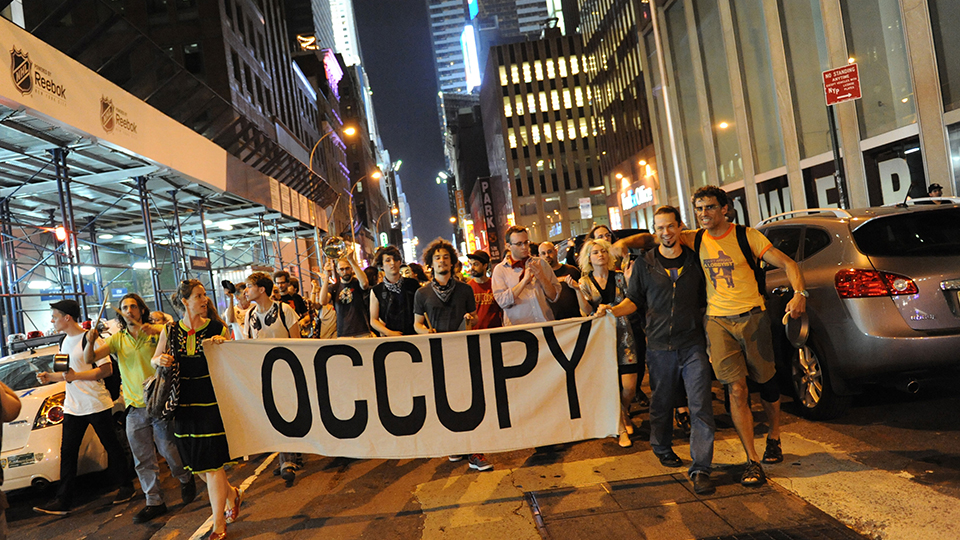The occupy movement started with the Occupy Wall Street in 2011. Occupiers created physical and political space for reasserting the power of the people. People taking up space and using social media/technology to spread in different locations is a powerful tool to protest.

At its core, Occupy made protesting cool again—it brought the action back into activism—as it emboldened a generation to take to the streets and demand systemic reforms: racial justice, women’s equality, gun safety, the defense of democracy
Rewriting the protest playbook, Occupy introduced a decentralized form of movement organizing that enabled hundreds of city chapters to reinforce and strengthen one another yet remain independent—a sharp break from the traditional, hierarchical structure of protest movements of the past. Pioneering the use of live-stream technology while employing powerful social-media messaging and meme tactics to grow participation both on- and offline, Occupy showed a new generation how to turn social movements into a viral spectacle that seizes control of the public narrative.
More deeply, the movement on Wall Street injected activists with a new sense of courage: Confronting power and issuing demands through civil disobedience is now an ingrained part of our political culture.
Read more:
https://occupy.com/article/occupy-wall-street-did-more-you-think#sthash.qsajQYqR.dpbs